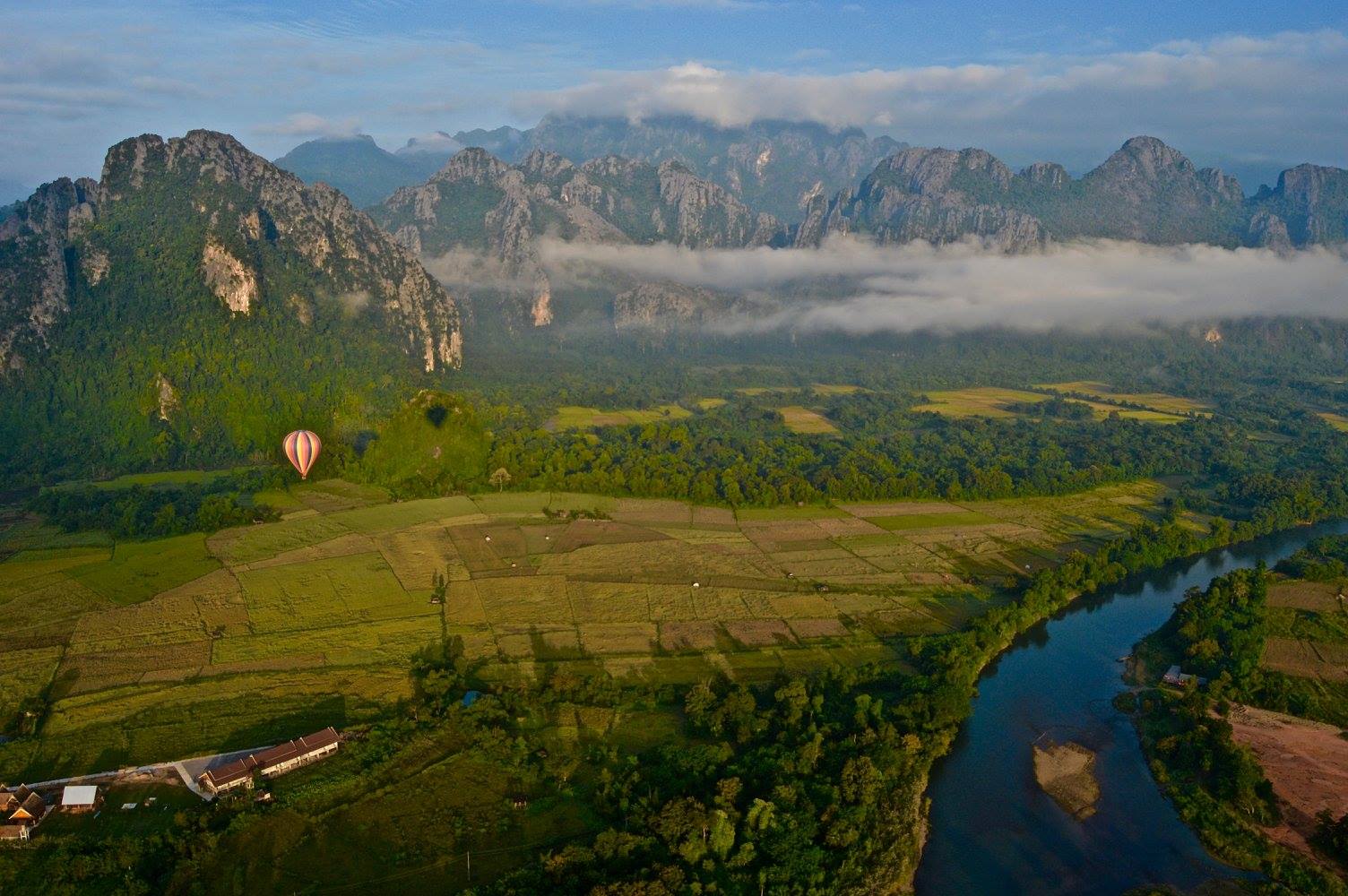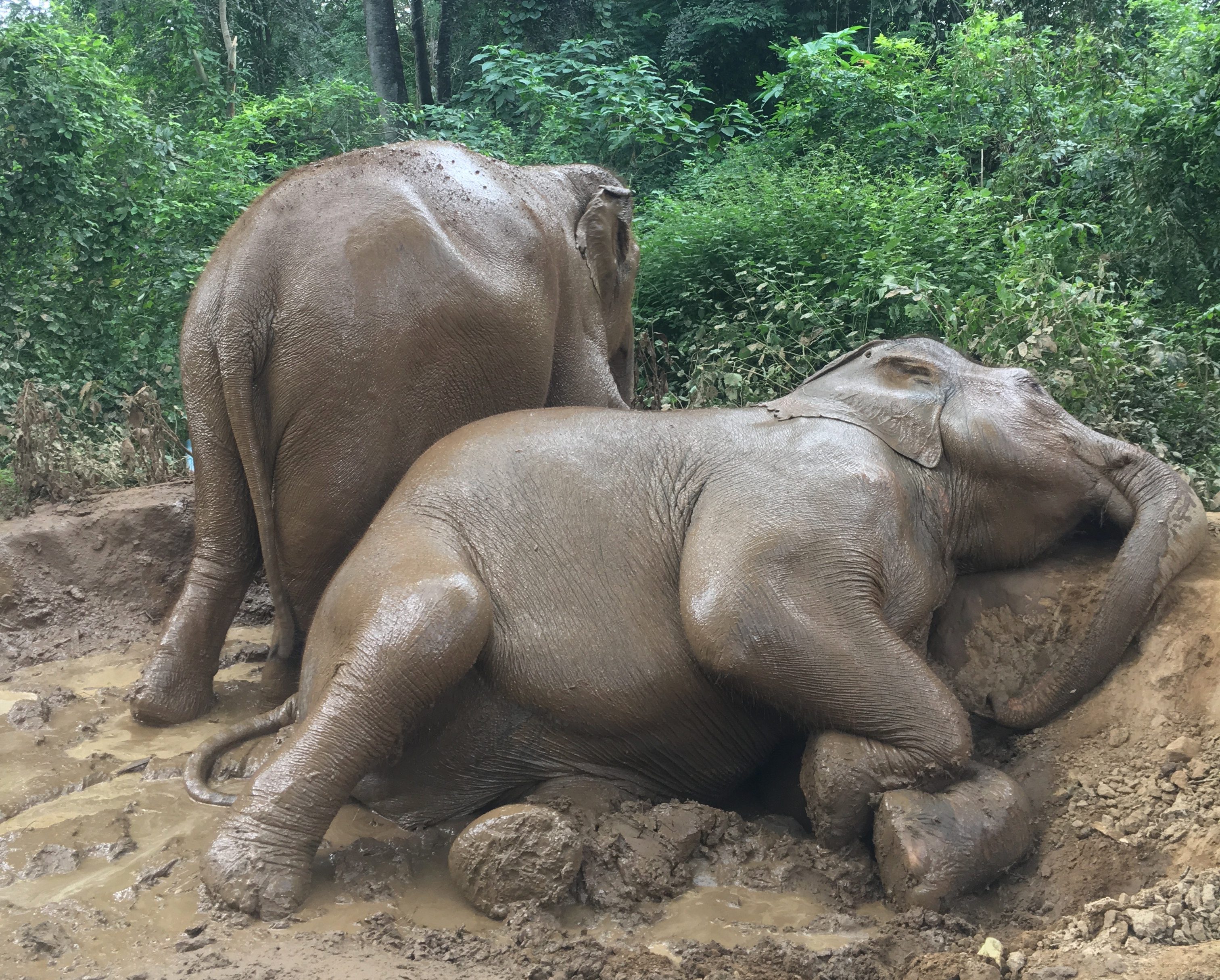Vang Vieng is a small backpacker town located in the sleepy, land-locked, mountainous, and oft-forgotten on the Southeast-Asia-tourist-trail nation of Laos. This area, and Laos in general, boasts vast rural landscapes of rice fields stretching to all horizons, impressive steep mountainous terrain, and wild rivers cutting through narrow valleys and dense forests.
These natural landscapes have made Vang Vieng a center of outdoor recreation including hiking, climbing, and kayaking. It is also home to the cheapest hot air balloon rides in the world…which can either be a good or bad thing depending on your perspective and risk-tolerance.
I hopped on the early morning balloon ride for $90 dollars and spent the better part of an hour shooting and taking in the awe-inspiring views from 2000 feet high as the golden hues of sunrise spilled across the landscape.
Angkor Wat is a complex of ancient temples located near Siem Reap, Cambodia. Originally built as a Hindu temple towards the end of the 12th century, it was later converted to a Buddhist temple, and is still to this day the largest religious monument in the world.
While over-run with tourists during open hours–resembling an almost Disney-esque experience of waiting in long lines under the hot, humid sun and innocent faces smiling into cameras held up by selfie-sticks–Angkor Wat is nonetheless an impressive sight boasting vast historical and architectural significance.
In order to beat the crowds, plan an early wake-up call and arrive at the temple’s opening while it’s still dark. I was one of the first to arrive when I visited and enjoyed nearly a full hour of exploring the temples in isolation and cool, dry temperatures. Oh, and I also witnessed a once-in-a-lifetime sunrise as the day’s first light rose over the main temple, pouring its golden rays across the grassy grounds and aged stone structures.
This comes from a post I wrote for the ISA Student Blog back when I was studying abroad in Bangkok, Thailand in 2016. Click here for the original post.
While always full of new sights and experiences, the bustling metropolis of Bangkok, Thailand can feel a bit overwhelming at times. Sometimes we just need to escape the smog and noise of the city and relax in nature. Thailand is full of natural beauty, but many of the common postcard-worthy locations are in the north or the southern islands and require multi-day trips. If you are a busy college student and only have a day or two to spare, no need to worry, there are many options to find fresh air and outdoor activities near Bangkok. The following three locations are all within a few hours of the city and provide one-of-a-kind views and unforgettable experiences with wildlife.
Khao Yai National Park
Located north of Bangkok, Khao Yai National Park is the largest national park in Thailand. Upon arriving at the park, you will likely be immediately greeted by large groups of macaques scavenging for food or grooming each other on the side of the road. Look more closely and the park’s other primate species, gibbons, can be seen gracefully swinging between trees and vines. Other wildlife commonly found include elephant, deer, and horn bills. According to our guide, there are only ten Tigers left in the park and you would have to be extraordinarily lucky (or unlucky!) to spot one. A guided day tour in the park will include jungle trekking and visiting several majestic waterfalls. The most famous being Haew Suwat waterfall, immortalized by the film ‘The Beach’ when Leonardo DiCaprio’s character leapt dozens of feet into the pool below. Make sure to bring long pants and proper shoes for Khao Yai, as leaches are common and river crossings are often unavoidable.
Erawan Falls National Park
To the west of Bangkok, near Kanchanaburi, lies another of Thailand’s many national parks. Despite its proximity to Bangkok and Kanchanaburi, Erawan Falls is rarely overcrowded with tourists and can be a nice place to relax and unwind. There is a series of waterfalls along an easily walk-able path that leads to several different emerald green pools where one can escape the heat. Make sure you walk all the way to the top, as there will be less people and you might even have your own private swimming hole!
Elephant Haven Thailand
Also near Kanchanaburi is a quiet elephant sanctuary along the river called Elephant Haven. Elephants are an important symbol for Thailand and it is on almost every travelers bucket list to see one. However, many elephants have been mistreated for popular tourist activities like elephant riding and elephant shows (read why you shouldn’t ride elephants here). All the elephants at this sanctuary have been rescued from these types of events and now enjoy freedom. A day at Elephant Haven involves swimming with the elephants in the river and bathing and feeding them. Expect to completely fall in love with these magnificent creatures and to come away with an epic new profile picture!




























